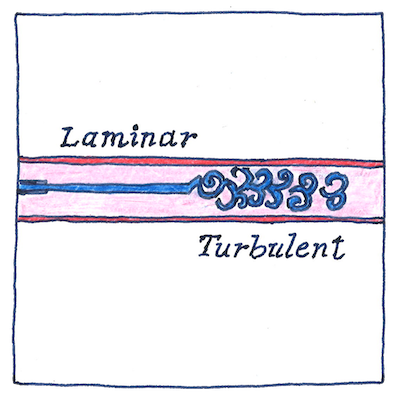Just took a break from my pooter to heave my corpulent meatsack self to my ensuite to belatedly brush my teeth after brekkie. Stooped over my handbasin, doing the doings, i realised that parts of my face were being randomly splashed, so i returned my mind from zooming along the astral plane to consider what might be happening.
Realised that i'd forgotten to turn the cold tap fully off as i began brushing, that the combo of its consequent partial valve opening, the cooler than usual day, & the local water pressure today had combined to make the resultant waterflow's #ReynoldsNumber fully turbulent, not laminar. Furthermore, the ensuing randomness of its flow in this mode was such that often it was striking the basin drain grate grills rather than falling cleanly thru the gaps, & was rebounding aka splashing. Finally, my stoop was sufficient that my face happened to be in just the right range to intersect with this mild local splashing.
These contemplative revelations pleased me. It was a nice little low-key local demonstration that no matter the pomposity, arrogance, & suicidal determination of the ridiculous human species, the principles of #physics, #thermodynamics, #fluidmechanics, & #chaostheory will always prevail.
But i expect such thoughts regularly cross the minds of most peeps as they do their routine ablutions... 🤷♀️ 🤭 😜
#existentialism #misanthropy #ClimateCrisis #science #wearetotallyfscked

